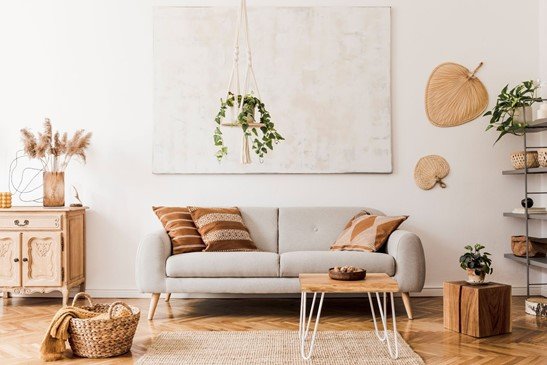Discover Unique Home Decor Accessories to Enhance Your Interiors
Master the Art of Layering Textures in Home Style for a Cozy Atmosphere
The capacity to effectively layer structures within home decoration is a nuanced skill that significantly contributes to a cozy and inviting ambience. The option of corresponding appearances, from soft fabrics to all-natural elements, is crucial in achieving this balance.

Recognizing Structure Fundamentals
When it comes to home style, understanding the principles of appearance is necessary for developing a harmonious and inviting room. Texture refers to the tactile top quality of surface areas and can significantly influence the total aesthetic and feeling of a space.

Choosing the Right Materials
Choosing the right materials is crucial in accomplishing a well-layered appearance in home design. The option of products not just influences the general visual but likewise affects the convenience and functionality of the area. When considering structures, focus on natural fibers such as cotton, wool, linen, and silk, which supply warmth and a responsive high quality that synthetic products often do not have.
For upholstery, select sturdy fabrics that can endure wear while preserving their appearance. Velour and chenille can add extravagant deepness, while canvas and denim lend a more informal feeling. Integrating stone, steel, or timber can enhance the tactile contrast, supplying a grounded, organic aspect to your design.
Accessories like carpets and pillows can introduce diverse textures and patterns, improving the general split effect. Eventually, the right material options will integrate with your style vision, creating a room that feels inviting and natural.
Layering Techniques for Deepness
Effective layering methods are important for developing deepness in home design, changing a level space into one that really feels rich and inviting. To accomplish this, start by incorporating different appearances that contrast yet match each various other. For example, juxtapose smooth surfaces like glass or steel with softer products such as woollen or linen. This develops visual rate of interest and responsive diversity.
Layering rugs can efficiently specify locations within an area, including warmth and dimension. Strategically positioning toss cushions with varying textures and sizes on couches or beds can improve deepness and comfort.
In addition, include building aspects such as shelves or mounted art work to develop upright layers. This not only draws the eye upward yet also offers opportunities to introduce additional textures through attractive products displayed on the racks.
Shade Sychronisation and Texture
In the realm of home decor, achieving harmony in between color and texture is vital for establishing a cohesive and welcoming ambience. When attentively worked with, shade and appearance can raise the visual charm of a space, developing deepness and rate of interest.
:max_bytes(150000):strip_icc()/living-room-decor-ideas-5442837-hero-8b6e540e13f9457a84fe9f9e26ea2e5c.jpg)
Following, focus on structure. Soft fabrics like velvet or bed linen juxtaposed with tough materials such as timber or steel create a vibrant interplay. For circumstances, a deluxe velvet couch matched with a streamlined, metallic coffee table presents a responsive contrast that invites touch and expedition.
Additionally, layering different structures-- like a woven carpet under a smooth table-- can further enhance the room. Bear in mind to maintain a cohesive appearance by restricting the variety of colors and structures, which helps avoid aesthetic disorder. By mastering the art of color coordination and structure, you can produce a setting that really feels both unified and inviting.
Seasonal Texture Transitions
As the seasons change, so too ought to the structures within your home to show the advancing ambience and state of mind. Transitioning your decor from one season to another can create a sense of freshness and pop over to this web-site comfort, enhancing your space's overall appeal.
In spring and summertime, accept lighter materials such as linen and cotton. These materials promote a breezy feel and can be enhanced with dynamic patterns or subtle textures like embroidered details. Integrate airy toss pillows and lightweight blankets to maintain a sense of relaxation.
As autumn methods, think about presenting warmth through richer textures. Woollen, velour, and larger knits can provide comfort and coziness. Select earthy internet tones and split fabrics like chunky knit throws or luxurious velours to produce a welcoming setting.
Winter months asks for a much more indulgent approach. Include split textures with faux hair, thick wool, and plush products - Home decor. These elements not just add depth to your style however also welcome warmth throughout chillier months
Conclusion
To conclude, understanding the art of layering appearances in home design considerably contributes to producing a comfortable atmosphere. By recognizing structure basics, selecting appropriate products, employing efficient layering techniques, and working with colors, an unified and inviting room can be achieved. In addition, adapting appearances seasonally enhances the general aesthetic and comfort of the home. This thoughtful strategy not only improves the visual charm yet likewise cultivates an environment favorable to relaxation and wellness.
The ability to successfully layer textures within home decoration is a nuanced ability that considerably adds to a cozy and welcoming ambience.When it comes to home decor, comprehending the basics of appearance is vital for developing an unified and my response inviting space. By grasping the fundamentals of structure, you lay the foundation for even more innovative layering strategies, leading to a well-curated and welcoming home decor scheme.
Selecting the best materials is important in accomplishing a well-layered appearance in home style.In verdict, understanding the art of layering appearances in home style significantly contributes to developing a cozy atmosphere.